
Under de senaste 70 åren har det skett stora förändringar på madrassområdet. Vi tog avstånd från det naturliga och välkomnade det syntetiska, allt i den billiga och snabba massproduktionens namn. Madrasser av polyuretanskum och syntetisk latex översvämmade marknaden och tog effektivt över och blev det konventionella valet. Förändringen var ingen överraskning eftersom det genomsnittliga hemmet långsamt har förvandlats till ett Frankenstein-monster av petroleumbaserade produkter och syntetiska alternativ. Den nya vågen av laboratorieodlade madrasser var bara ytterligare en del av ekvationen. Jakten på det som är billigt och snabbt att producera leder alltid till hälsoproblem. Så låt oss dyka ner i de vanligaste giftiga kemikalierna som lurar i madrasser och titta på deras effekter på människokroppen och konditionen.
Vanliga giftiga kemikalier
Människor tillbringar en tredjedel av sitt liv med att sova och därför är det ingen överraskning att innehållet i deras madrasser spelar en viktig roll för deras hälsa. När du använder en syntetisk produkt utsätts din organism oundvikligen för onaturliga ämnen som kan utgöra hälsorisker. Så är fallet med de vanliga giftiga kemikalier som lurar i polyuretanskum, syntetisk latex och flamskyddsmedel.
För att kemikalierna ska orsaka skada måste de först komma i kontakt med människokroppen; detta sker genom fysisk beröring eller inandning. Med en genomsnittlig sömntid på 8 timmar och en temperatur mellan 97 F och 99 F genererar människokroppen tillräckligt med värme för att utlösa alla kemikalier med låg kokpunkt, vilket effektivt förvandlar dem till giftiga ångor, även kända som flyktiga organiska föreningar (VOC).
VOC är en biprodukt av dessa vanliga giftiga kemikalier som avdunstar och omvandlas till gaser som vi andas in. Dessa utsläpp orsakar ofta allergier, hudirritation, huvudvärk, illamående eller andra lindrigare symptom. Långvarig exponering för VOC och andra mer stabila skadliga kemikalier som finns i polyuretanskum, syntetisk latex och flamskyddsmedel kan dock leda till allvarliga biverkningar som cancerutveckling, DNA-skador eller störningar i det endokrina systemet.
Polyuretanskum
I lekmannatermer är polyuretanskum en petroleumbaserad produkt som kommer från plastfamiljen. Det är en cocktail av kemikalier med låg kokpunkt som smälter bort under sömnen. Polyuretanskum användes en gång som gummiersättning under andra världskriget och hittade vägen till madrassindustrin på grund av dess låga produktionskostnad. Naturligtvis kan produktens kvalitet och hållbarhet ses i dess skrämmande förmåga att "sönderfalla". På bara 10 års användning kan en madrass av polyuretanskum förlora över hälften av sin vikt på grund av avgasning och oxidation. Med andra ord kan man räkna med att andas in och ut mer än 50% av sin madrassmassa i form av VOC och damm (oxiderad polyuretan bryts ned) som lägger sig i hela huset.
För att bättre förstå effekterna av de vanliga giftiga kemikalier som döljer sig i polyuretanskum, låt oss bryta ner några av de mest framträdande syntetiska ämnen som finns inuti.

Bensen
Bensen är en kemikalie med en söt lukt som tyvärr har mycket sura konsekvenser för människokroppen. Enligt Hälso- och sjukvårdsdepartementet (DHHS) kan långvarig exponering för bensen orsaka cancer hos människor. Kemikalien är särskilt skadlig för benmärgen, vilket leder till störningar i produktionen av röda blodkroppar. Ett måttligt symptom på bensenexponering kan vara anemi. I mer allvarliga fall kan slutresultatet leda till leukemi eller cancer i de blodbildande organen.
Formaldehyd
Formaldehyd är en färglös gas och det huvudsakliga sättet att exponeras för kemikalien är genom inandning. Enligt Amerikanska cancerföreningenformaldehyd klassificeras som ett cancerframkallande ämne som kan leda till lindriga besvär som rinnande ögon, hosta och hudirritation, eller till livshotande sjukdomar som leukemi. Det är en mycket kommersiell kemikalie som används i isolering, konstruktion, hushållsartiklar och till och med kosmetika.
PFOS
PFOS eller perfluoroktylsulfonat är en kemikalie som betraktas som en global förorening med negativa effekter på människokroppen. Toxinet orsakar skador på det endokrina systemet, immunsystemet och fortplantningssystemet. Det kan leda till hjärnsjukdomar och störa den kognitiva utvecklingen. Kemikalien används fortfarande i produktionen av skummadrasser i USA, men har förbjudits i EU enligt Förordning om långlivade organiska föroreningar sedan 2020.
VOC
Polyuretanskum är en ökänd källa till VOC. Många av de kemikalier som används vid tillverkningen av detta material har en låg kokpunkt. Vid rumstemperatur förvandlas din skummadrass till ett gasavgivande skumblock som sakta men säkert förorenar luften i rummet. Med tanke på att luftkvaliteten inomhus tenderar att vara fem gånger sämre än utomhus, är det mycket oroande hur mättnaden av VOC kan leda till att miljön i ditt hem blir ohälsosam. Beroende på koncentrationen och typen av VOC kan biverkningarna av att andas in toxinerna vara irritation i ögon, näsa eller hals, koncentrationsförlust, huvudvärk, illamående eller leverskador. I vissa fall kan cancer utvecklas efter långvarig exponering.
Syntetisk latex
Syntetisk latex är ett ganska enkelt material som består av två petroleumbaserade föreningar som kallas styren och butadien. Båda kemikalierna är farliga för människors hälsa och klassificeras som VOC. Med en sådan profil av giftiga madrasskemikalier är syntetisk latex ett av de mer "produktiva" avgasande materialen. Den främsta anledningen till att tillverkarna föredrar syntetisk latex framför naturlig latex är helt enkelt den låga produktionsinsatsen och det låga produktionspriset. Även om materialet är resurskrävande och inte kan återvinnas eller brytas ned biologiskt, har syntetisk latex fortfarande kommersiell attraktionskraft på grund av sin låga kostnad.
Med tanke på att syntetisk latex i princip är en plast som tillverkas i ett laboratorium, skulle det vara en bra idé att bryta ner dess föreningar och undersöka vilka hälsorisker de kan utgöra.
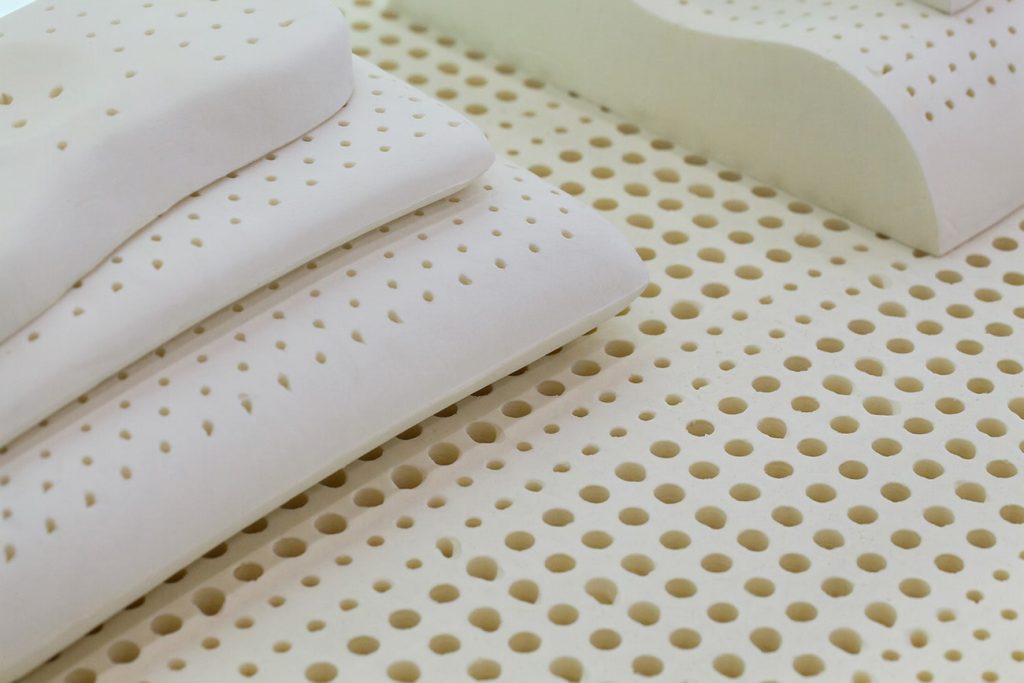
Styren
Styren är ett derivat av bensen (den första kemikalien vi nämnde i samband med polyuretanskum). Det är en färglös oljig vätska som är mycket benägen att avge gaser. Det är farligt för människors hälsa och orsakar ett brett spektrum av problem. Enligt Förenta staternas miljöskyddsmyndighet (EPA) kan styren öka risken för lymfom och leukemi, samtidigt som det är giftigt för hjärnan, levern och lungorna. Andra symptom på exponering för kemikalien kan vara trötthet, huvudvärk, depression eller hörselnedsättning. Styren är en alltigenom skadlig förening som bör undvikas så mycket som möjligt.
Butadien
Butadien är i huvudsak en föregångare till syntetiskt gummi och har därför många industriella användningsområden. Det är en färglös gas som är mycket brandfarlig och som framställs genom bearbetning av petroleum. Enligt en rapport från Förenta staternas arbetsmarknadsdepartementButadien är ett cancerframkallande ämne som är skadligt för nervsystemet, ögonen och huden. I kombination med styren bildar de en farlig duo som kan vara skadlig för människors hälsa efter långvarig exponering.
Kemiska brandhämmande medel
Eftersom madrasser av polyuretanskum och syntetisk latex innehåller kemikalier som är mycket brandfarliga är det enligt lag obligatoriskt att behandla madrasserna med brandhämmande medel för att uppfylla de federala standarderna för brandfarlighet. Återigen kommer bekvämligheten i form av tid och kostnad på bekostnad av arbetstagarnas och konsumenternas hälsa. Borsyra, antimon eller halogenerade flamskyddsmedel används ofta i madrassindustrin trots att de är välkända för sina negativa hälsoeffekter. Dessa giftiga kemikalier som lurar i din madrass kan försena puberteten och skada fortplantningssystemet, hjärnan eller nervfunktionen. Även i mer allvarliga fall kan de ovan nämnda brandhämmande ämnena störa spermiernas hälsa och funktionalitet över två hela generationer! Flamskyddsmedel ökar de toxiska effekterna av de skadliga föreningar som finns i de flesta kommersiella syntetiska madrassmaterial.
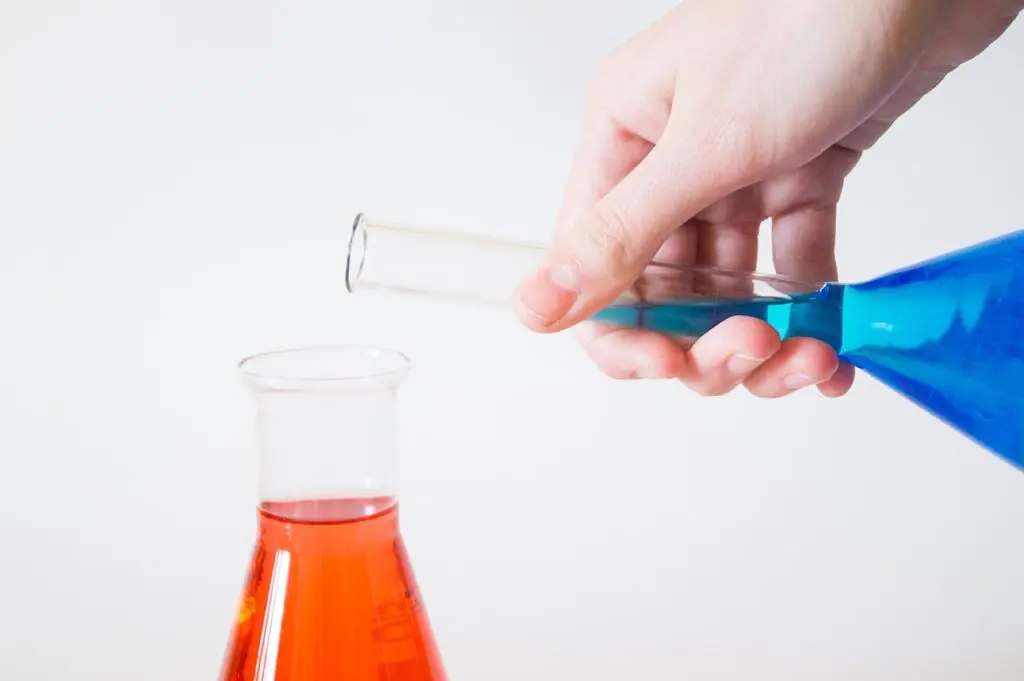
Dosen gör giftet
Farorna med de giftiga kemikalier som döljer sig i din madrass beror på koncentrationen och exponeringstiden. Många av de mer allvarliga hälsoeffekterna utvecklas vid långvarig exponering för höga nivåer av kemiska koncentrationer. De som drabbas hårdast är oftast de arbetstagare som deltar i tillverkningsprocessen av madrasserna eller själva kemikalierna.
Ofta är mättnaden av kemikalierna i madrasserna minimal och kan yttra sig endast i milda symptom. De flesta av samma kemikalier finns dock i andra hushållsföremål, vilket gör att nettoutsläppen av VOC ökar drastiskt.
Naturligtvis är den kemiska dosen alltid relaterad till personens storlek och ålder. En vuxen kan tolerera en större mängd toxicitet jämfört med ett barn. Det är därför material som polyuretanskum, syntetisk latex och flamskyddsmedel är särskilt skadliga för spädbarn och barn och kan ha negativa effekter på deras utveckling.
Hur man undkommer lavinen av kemikalier
Att vädra ut rummet eller köpa skyddande överdrag som begränsar VOC-utsläppen behandlar bara symptomen men tar aldrig itu med grundorsaken. För att helt eliminera den toxiska belastningen från din madrass behöver du ett mer holistiskt tillvägagångssätt. Den bästa och mest skottsäkra strategin för att bekämpa VOC är att göra sig av med källan - byt ut din syntetiska madrass mot en naturlig.
I de flesta fall är syftet med det syntetiska att återskapa det som är naturligt med målet att göra dess "kopia" billigare och lättare att producera. Polyuretanskum och andra konstgjorda ämnen är utformade för att efterlikna de inbyggda egenskaperna hos organiska material som ull, bomull eller tagel som har genomgått miljontals år av evolution.
Madrasser tillverkade av 100% ren ull är bevisat fria från VOC och innehåller inga skadliga kemikalier. Ull är naturligt brandsäkert, vattenavvisande, har hög andningsförmåga och är isolerande; det finns ingen anledning att använda konstgjorda ämnen som är skadliga för kroppen när några av de mest eftertraktade madrassegenskaperna redan finns i råmaterialet. Ullens antimikrobiella, kvalster- och mögelresistenta egenskaper gör den dessutom ännu säkrare för spädbarn och barn eftersom den är hypoallergen och skonsam mot den växande kroppen.
Att välja ett helt naturligt material är inte ett alternativt val utan en vanlig praxis som har funnits i årtusenden. Det är först under de senaste 70 åren som vi har avvikit från naturen och experimenterat med syntetiska material. Med tanke på den mängd sjukdomar och biverkningar som orsakas av dessa konstgjorda giftiga kemikalier som lurar i din madrass, blir det allt tydligare att människokroppen vill ha det som är naturligt.

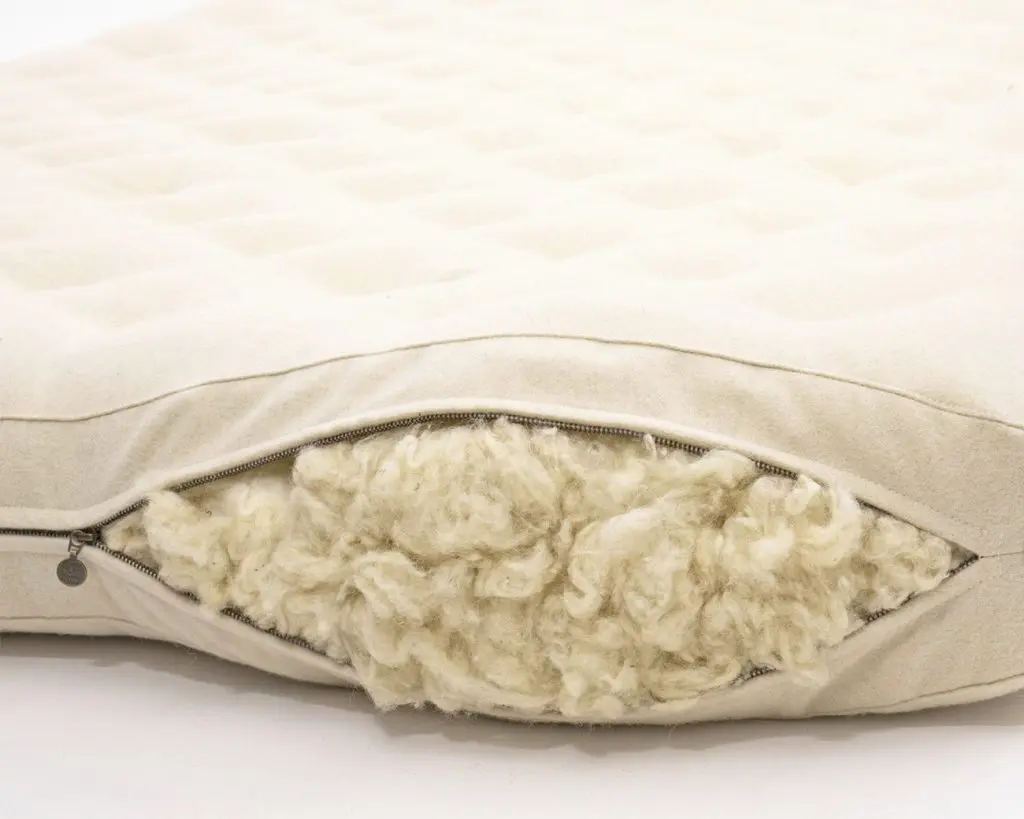




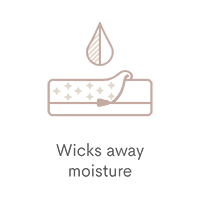

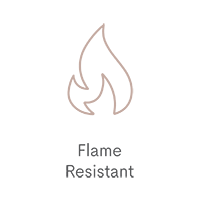

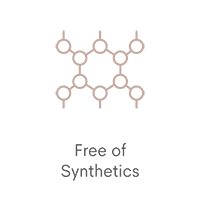

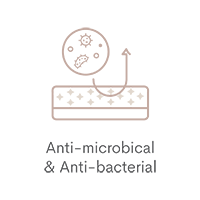
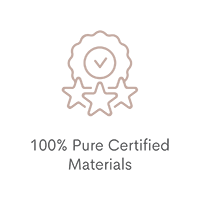







Lämna ett svar